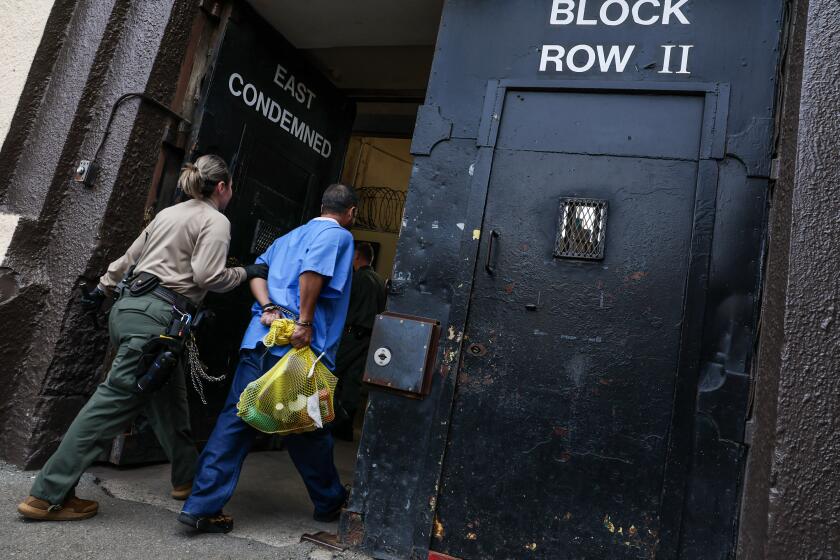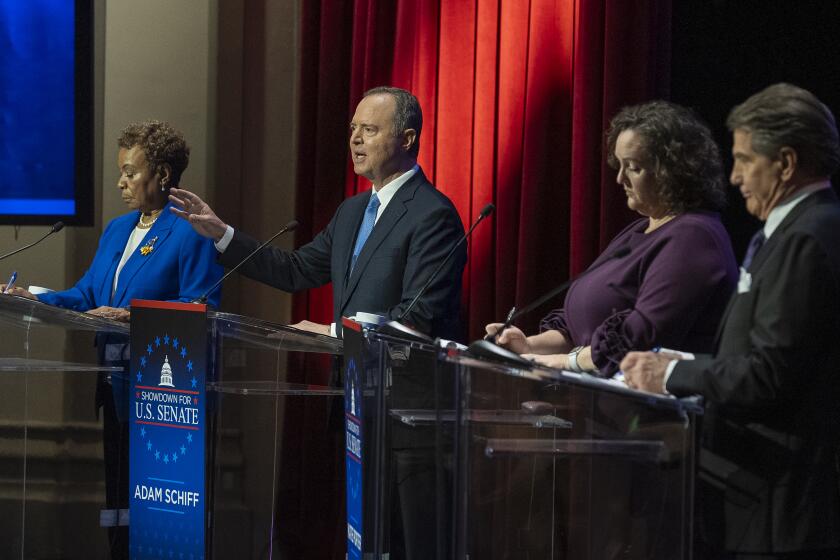EPA Seeks Limit on Offshore Rig Emissions
In a move to advance the cause of clean air, U.S. Environmental Protection Agency chief William K. Reilly said in Los Angeles on Thursday that he will propose unprecedented air quality controls on oil and gas rigs located off the Pacific, Atlantic, arctic and Florida gulf coasts.
Reilly said he will sign a detailed plan by early next week outlining the requirements, the first by the EPA to limit offshore emissions. The regulations are required by amendments to the federal Clean Air Act approved last year by Congress.
Air pollution from offshore platforms in federal waters has long galled California officials, who have been hard-pressed to meet federal clean air standards. Although California officials have enforced tough regulations on platforms in state waters within three miles of the coast, they have no jurisdiction beyond that point.
Reilly’s plan will subject drilling platforms in federal waters to California’s stricter standards.
“Today’s proposal . . . will ensure that offshore sources bear their fair share of the air pollution control burden,” Reilly said.
Scheduled to take effect next May after public hearings, the regulations are expected to eliminate 540 tons a year of smog-forming emissions from 23 oil rigs off Southern California. Although the emissions account for only a fraction--less than 1%--of what is pumped into the air each day from all sources, California officials say every reduction is important in the fight for clean air.
Even more significant than the air quality gains, they say, is the shift in federal policy scrapping its weaker standards.
“It’s more significant than the (emission reduction) numbers,” California Air Resources Board spokesman Bill Sessa said. “By requiring it, the Clean Air Act brings the federal policies in line with California’s. Now we have to see if it’s being carried out.”
Sessa added that the state would reserve further comment until a detailed analysis of Reilly’s plan is completed.
Some local officials cautioned against expecting too much from Reilly’s plan. They said loopholes could limit the benefits.
“They kind of give with one hand and take away with the other,” said an aide to Rep. Henry A. Waxman (D-Los Angeles) who asked not to be identified. “The problem is when you have a provision that can do a lot of good but write in a loophole, it’s hard to see the silver lining. What I see is a lot more fights when this battle should be over and won. It is very disappointing.”
He said one such loophole could exempt drilling platforms from future state or local air pollution laws.
In explaining his proposal, Reilly said states would be given authority to enforce their own standards in federal waters if they meet the new federal requirements.
As a result, California could extend its enforcement as far as 28 miles. The federal government would retain its jurisdiction beyond that point, but the issue is moot because the EPA said there are no platforms that far out.
Until the Clean Air Act was amended last year, regulation of offshore air pollution in federal waters was the responsibility of the Interior Department’s Minerals Management Service, which also is charged with promoting oil and gas leasing.
California officials have long believed that the service had a built-in conflict of interest. The proposal does not cover the oil-rich Gulf of Mexico tracts along the coasts of Texas, Louisiana, Mississippi and Alabama, which remain under Interior Department jurisdiction. Within three years of Reilly’s proposal going into effect, the Minerals Management Service must complete a study of emissions adjacent to those four states and could recommend regulatory changes similar to Reilly’s.
Emissions from the 23 platforms off Southern California account for 240 tons of smog-forming nitrogen oxides and 300 tons of volatile organic compounds that are carried by sea breezes into the region.
New platforms, drilling ships, construction ships, processing and transportation equipment and other machinery used within the 28-mile zone also must comply with emissions standards, the EPA said.
Platforms and other equipment will be given two years to comply once the regulations are finalized. The controls are expected to cost the oil industry $2.2 million annually.
Certain exemptions are allowed, such as if new controls prove to be technologically infeasible, the EPA said. In those cases, the polluter will be required to make equivalent reductions elsewhere.
The exemptions have some local officials worried.
William Master, assistant director of the Santa Barbara County Air Pollution Control District, pointed to a Reilly proposal that allows the EPA to bar enforcement of an air pollution rule if it determines that it would impede oil and gas exploration and drilling.
“We believe that’s in direct conflict with the requirements of the federal law and that it is a totally inappropriate position for EPA to be in,” Master said.
But, Kelly Fortin, who helped write the EPA proposal, said the agency wanted to prevent local authorities from implementing emission restrictions aimed at prohibiting offshore oil and gas development.
More to Read
Start your day right
Sign up for Essential California for news, features and recommendations from the L.A. Times and beyond in your inbox six days a week.
You may occasionally receive promotional content from the Los Angeles Times.






